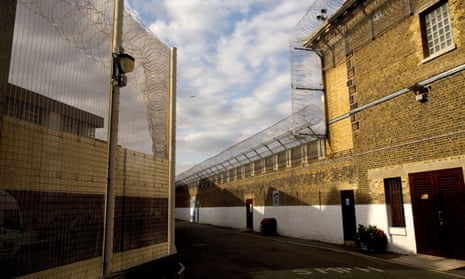The use of force against inmates has doubled over the past decade, amid continuing concern over high levels of violence and disorder in prisons. A loss of experienced prison staff, overcrowding and a subsequent growth in violence against both prisoners and staff has been blamed for force being used 49,111 times in England and Wales in the 12 months before the Covid pandemic began.
According to data obtained under the Freedom of Information Act, force was used 59.1 times per 100 inmates in the year from April 2019. The last such figures, published in 2011-12, showed force used about 27 times per 100 prisoners.
Experts said the findings reflected the disorder inside a UK prison system described as in “deep crisis” last year by the European Committee for the Prevention of Torture, part of the Council of Europe. It said the jails it visited were “violent, unsafe and overcrowded”.
Nick Davies of the Institute for Government thinktank said the use of force was further evidence of drastically declining standards: “Deep cuts to prison funding and staff numbers in the first half of the last decade were followed by big increases in incidents of assault, self-harm and poor prisoner behaviour, and reduced opportunities for rehabilitation.
“Funding injections in recent years have stabilised the system but there is a long way to go to return prisons to where they were. The government’s criminal justice reforms could see the prison population reaching record levels, and it’s unclear whether planned new prisons will be ready in time to safely house additional inmates.”
Mick Pimblett, assistant general secretary of the Prison Officers’ Association, said this came as no surprise: “These figures coincide with a period of instability in our prisons where record levels of violence against our members by prisoners and among prisoners themselves were commonplace. The reduced staffing levels and budget cuts imposed on [HM Prison and Probation Service] in recent years are an obvious contributory factor to these figures.”
Since March, restrictions designed to stop the spread of Covid have also led to a fall in violence. Visits have been curtailed, inmates have spent far more time in cells, and group activities have been reduced. There is now debate about how to lift some of the restrictions without a return to chaos. Peter Clarke, the recently departed chief inspector of prisons, warned that the pressures on the system “will not have gone away because of the health emergency”.
Pimblett said officers were now attempting to ensure that the system did not revert to the “lawless” state experienced just before the pandemic. “Since March 2020, the Covid crisis has proved that – with improved staffing levels, investment and spans of control – violence can be reduced in prisons by building relationships with prisoners in a way that was not possible prior to March 2020.”
But Frances Crook of the Howard League for Penal Reform said the pandemic had revealed some “really awful” aspects of prison life. “Prisons were so violent and so under-resourced that people would prefer to sit locked in their cells all alone or with somebody else watching television all day and all night. If that is preferable, it’s an incredibly damning indictment [of] how violent and frightening prisons were before.”
Nick Hardwick, chief inspector of prisons from 2010 to 2016, said there was now an opportunity to improve conditions. “Prisons, up to the epidemic, were in the middle of an enduring crisis. Too many prisons were very violent places. As restrictions in prisons are eased, it is critical that it is done in a way that doesn’t allow us simply to return to what existed before – and doesn’t let the cycle of violence get out of hand. For the first time in a decade, there are some opportunities now. We can’t go back to how it was before.”
The Prison Service said: “Our officers use force as a last resort, and in the overwhelming majority of cases it is unfortunately necessary to protect themselves or others from harm. We are spending £100m to bolster prison security, clamping down on the weapons, drugs and mobile phones that fuel violence and crime behind bars.”It said the term “use of force” covered techniques ranging from those which staff used to prevent themselves being hurt, to restraint carried out by a three-officer team to control a violent prisoner. Violence fell by 37% in the most recent quarter for which data is available, and by 19% in the 12 months to June 2020.
